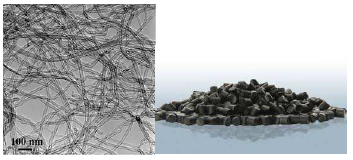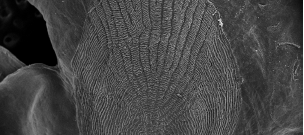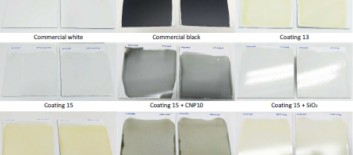Last updated: 25 May 2022
The work envisaged in WP3 targets three parallel approaches to enhance blade material performance. In order to improve the fatigue and impact resistance of the composite materials, several formulations, including CNT and impact modifiers to the reference resin, were prepared and tested by CANOE. Composite plates of glass fiber-reinforced vinyl ester resin were successfully manufactured for each formulation. Mechanical characterisation of each composite, including in-plane characterisation (longitudinal, transverse, +/-45° tensile traction), ILSS and Charpy impact testing, were done. The formulated resin is strongly dependent on ILSS and +/-45° tensile tests (in-plane shear). Other mechanical properties seem to be similar, whatever the formulation. The best results were achieved with the highest concentration of both 0.5% CNT_CS1-25 and XT100 formulations (+15% in tensile max stress for +/-45° and +25% in ILSS). Also, humid ageing assays were carried out to assess the moisture effect on formulated materials.
Three parallel research activities have been carried out in this study:
The NEMMO project team has developed novel composite material solutions to enhance the resistance of tidal turbine blades. The project has ambitious targets to drive down maintenance costs due to cavitation wear, bio-fouling and ageing, and to enhance hydrodynamic performance.
In this recent report, the project team has identified novel composite, coatings and biomimetic solutions that help improve mechanical properties and antifouling performance to achieve the cost reduction target mentioned above.



New nano-enhanced composite material solutions to improve fatigue and impact resistance.
New design and testing of biomimetic texture solutions inspired by the brill fish Scophthalmus Rhombus to control biofouling.
New development of non-leaching coatings incorporating biocide nanoparticles to enhance both cavitation and biofouling resistance.
After testing all composite materials, the best performing solutions and textures were identified:
• Lab testing of micro-textured surfaces showed that all candidate textures affected the percentage coverage and the cluster of biofouling organisms. The best results were obtained with the sharp edge raised rectangular bars, leading to a 13% decrease in the cell coverage, a 42% decrease in the colony size and a notable reduction in the nearest neighbour distance. If feasible, more significant reductions could also be achieved with narrower gaps between neighbouring structures.
• Functionalised silica nanoparticles and carbon nanocomplexes were also added to the coatings. As a result, Coating 15 (with and without silica nanoparticles) and Polyurethane Dispersion (PUD) were identified as the best-performing coatings.
These test results will then undergo marine testing in the next phase – as part of the activities in Work Package 4 (Testing Campaign for Behavioral Models Development). The project team will test the best-performing biomimetic texture and three candidate anti-fouling coatings, including water and solvent-based polyurethanes with and without nanoparticles, under realistic and dynamic marine conditions. The research will continue with the feasibility of scaling up laser etching of narrower biomimetic textures.